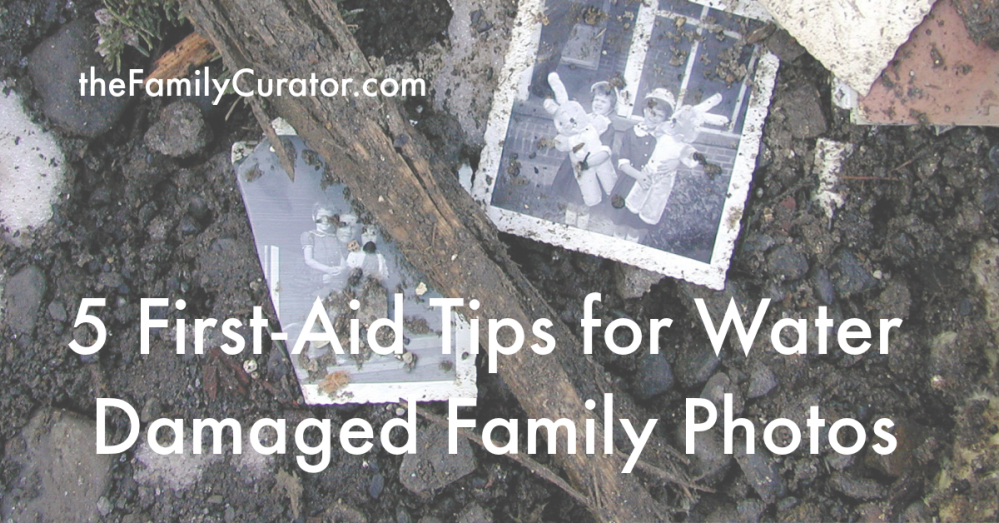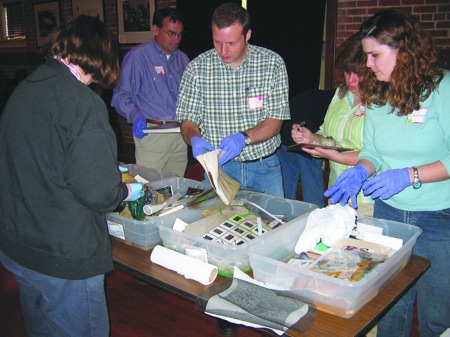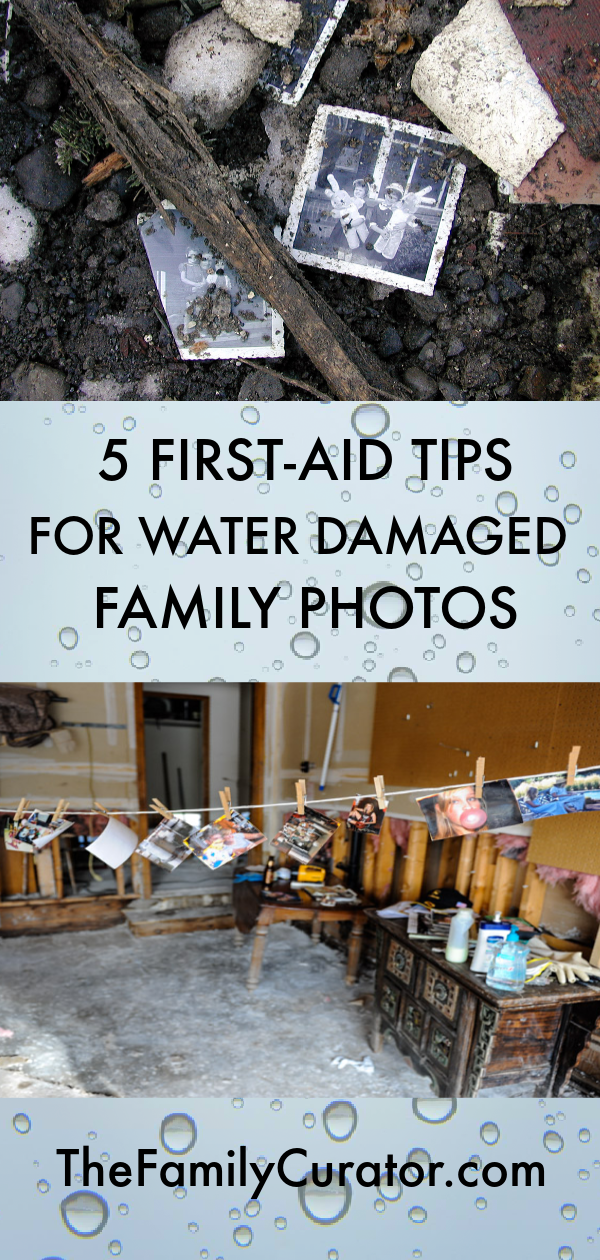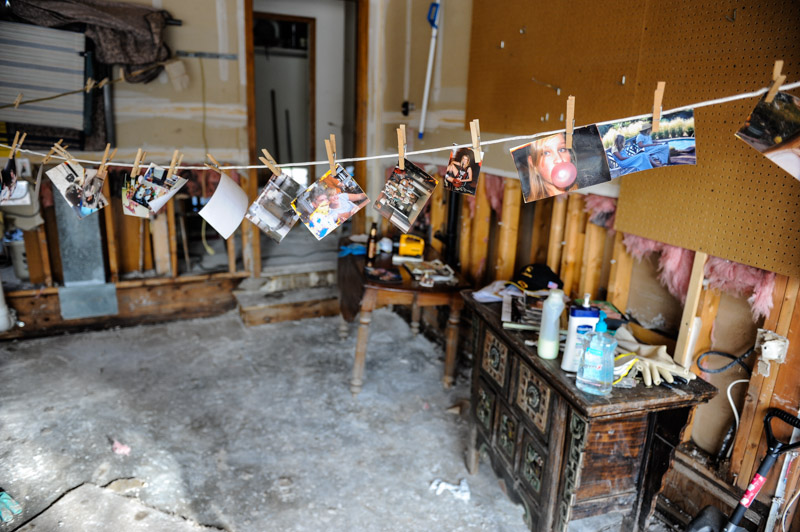 In the wake of the current hurricane season, thousands of families will hope to salvage damaged family photos, papers, and heirlooms. These tips from the Northeast Document Concervation Center and the National Center for Preservation Technology and Training are a good start for saving damaged family photos whether they are soaked by water from storms, floods, or burst plumbing.
In the wake of the current hurricane season, thousands of families will hope to salvage damaged family photos, papers, and heirlooms. These tips from the Northeast Document Concervation Center and the National Center for Preservation Technology and Training are a good start for saving damaged family photos whether they are soaked by water from storms, floods, or burst plumbing.
5 First Steps for Water Damaged Family Photos
Work first with your most important photos — heirloom wedding and old family photos, baby pictures, and photos that have not been digitized. Mold and mildew can begin to grow within 48 hours. If you can’t salvage photos within a few days or if prints are stuck together, freeze now and air dry later. Some antique photographs and fragile film will not survive water immersion or freezing, so it’s a good idea to set these items aside until you can consult a professional conservator for advice.
1. Handle With Care
Remember that photographs and paper items will be extremely fragile when wet; handle with care and avoid touching the emulsion surface of the print. Wear protective nitrile gloves and masks if photos begin to show mold. A stainless-steel microspatula is helpful to separate prints that are stuck together.
2. Framed Photos
Framed photos that become wet should be removed from the frame to air dry flat, whenever possible. Use a thin microspatula to remove backing paper and gently free prints from frame. If the photo is stuck to the glass, freeze the entire object to work with a conservator later.
3. Removing Silt and Mud
Rinse photos gently with clear water to clean off silt and debris without touching the surface of the print. Use distilled or bottled water if available. A plastic dishwashing tub is helpful for cleaning wet photos.
4. Air Dry
Spread out wet photos to air dry indoors if possible. Encourage air circulation by opening windows and running room fans. Likewise, run air conditioners and dehumidifiers to help keep circulate air around drying photos. Photos may curl while drying, but can be flattened later by professionals. Hang individual on a line with clothespins or spread on clean sheets to air dry.
5. Freeze Until Later
If you’re unable to dry out the photos within the first 48 hours, layer prints with household wax paper and place in ziplock type plastic freezer bags. Then, refrigerate or freeze the packets. Do not store damp items in plastic bags at room temperature — this will cause mold to grow and salvage may be impossible. Later, when you have more time, thaw, separate prints, and air dry on clean paper towels or cloths. Finally, Remember to take digital photos of damaged items for future reference. Consult a professional conservator for further restoration treatment. Download a free Genealogy Grab-n-Go Checklist and find more resources in my article “Keep Your Family and Family History Safe.”  This information is adapted from “Disaster Response & Recovery“, American Institute for Conservation of Historic and Artistic Works; from “Disaster Recovery Conserve-O-Gram,” National Parks Service, National Center for Preservation Technology and Training; and from “Emergency Salvage of Wet Photographs,” NEDCC. Please use your best judgement when working with damaged family photos and heirlooms. Always consult a professional conservator for help with valuable items. Photos: FEMA, and NCPTT Wet Recovery Workshop, 2008. Updated 13 September 2018. Thank you for supporting theFamilyCurator.com by shopping with the affiliate links on this website. I only recommend products I have used and find useful.
This information is adapted from “Disaster Response & Recovery“, American Institute for Conservation of Historic and Artistic Works; from “Disaster Recovery Conserve-O-Gram,” National Parks Service, National Center for Preservation Technology and Training; and from “Emergency Salvage of Wet Photographs,” NEDCC. Please use your best judgement when working with damaged family photos and heirlooms. Always consult a professional conservator for help with valuable items. Photos: FEMA, and NCPTT Wet Recovery Workshop, 2008. Updated 13 September 2018. Thank you for supporting theFamilyCurator.com by shopping with the affiliate links on this website. I only recommend products I have used and find useful. 







Thanks for stopping by, Tracy. I am so sorry to hear about your loss in the flooding and hope the most special photos can be saved. Sincere good wishes to you and your family. Feel free to send an email if you have any special questions I might be able to help with.
Found this site via Pinterest. Thanks so much for posting this information. Colorado recently was affected by flooding including my grandmother's house and 89 years worth of photos. I'm in the process of trying to salvage as many as I can for her and this site was so helpful.
Thank you!